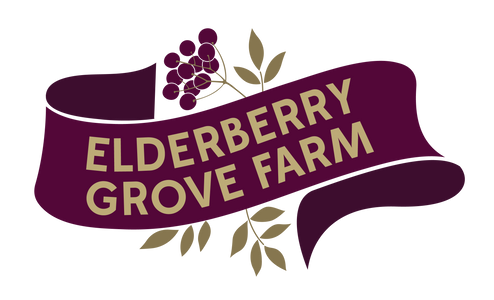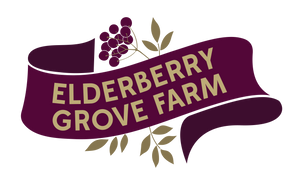Elderberry Varieties | Available at Elderberry Grove
Where can I get elderberry varieties to grow in Canada?
We grow 31+ elderberry varieties at our farm in cold hardiness zone 6b, in Salmon Arm, BC, Canada.
Cuttings are harvested in winter only and available for shipping from February through April. Pre-Order starts in Fall. Order here
+ Learn how to grow elderberry cuttings
VARIETIES:
-> Sambucus canadensis (aka Sambucus nigra. ssp canadensis) -Native to Canada/US. Zone 2-8. Find your growing zone here
Bob Gordon Identified and collected from the wild by Robert Gordon, Charlotte Cooper, and Andrew Thomas near Osceola, MO in 1999. The berry clusters hang decumbently which may discourage some species of birds. Semi-determinate to determinate in our latitude. Bob Gordon ripens a bit later than some of the other varieties and for this reason I do not recommend it for anyone any further north than where we live at 50.7 degrees latitude.
Ranch Is very vigorous and heavy yielding. Released by the University of Missouri in 2011. It is more drought tolerant than others and is the quickest to root from cuttings. Stems are strong and upright. Bushes are quick to establish. This is our most reliably productive and time proven variety on this farm. We've picked a favourite/best and it is Ranch. It is mostly determinate. Ranch begins to ripen earlier than most other varieties. It does well in poor soils, but is not the best for alkaline (high pH soil types). The fruit set on the season's earliest blooms will be improved for Ranch if you plant Kent, Berry Hill, Nova or Victoria as a pollinator companion.
Wyldewood is a widely grown variety in the Midwest. Selected from the wild by Jack Millican near Eufaula, OK, in 1995. It was released by the university of MO in 2010. Excellent for harvest and processing with good flavour. Fruit set is reliable and prolific. This variety is completely indeterminate, and will continue to produce flowers until frost kills the plant – it is possible to still see fresh flowers in December! Wyldewood is one of the latest ripening of all our varieties - and for this reason I do not recommend it for anyone growing further north than where we live at 50.7 degrees latitude. It would still be a great choice if you lived at a slightly lower lattitude, or just want to grow it for flower production. Prune to 4' tall or more to encourage earlier ripening.
Adams is an older variety originating in 1926 in New York, selected from the wild by William Adams. Tall variety which has small berries, but yields well and has large clusters. Ripens late, and unevenly for us, but it performs very well on other farms particularly in more southerly sites. It also produces a lot of flowers as it is indeterminate.
York is a cross between Ezyoff and Adams 2 done in 1926. It was released in 1964 from the New York Agricultural research station. Plant is large / productive; berry clusters heavy, berries are quite large and deeply red in colour. Ripens well for us mid season. Vigorous and bears well for many years. A good commercial variety across a wide range of climates.
Nova Seedling of Adams 2 released in 1959 from the research station in Kentville, Nova Scotia. Large dark fruit, with deep red juice. Sweeter than Kent and Victoria. Grown by commercial growers in Canada; Tolerates higher latitudes better than some varieties. Nova is the earliest ripener of all varieties we grow (followed by Kent and then Ranch).
Scotia Seedling of Adams 2 released in 1960 from research station in Kentville, Nova Scotia. Large fruit, ripens early. Sweeter than Kent and Victoria. Grown by commercial growers in Canada; should tolerate higher latitudes better than some varieties.
Victoria Seedling of Adams 2 released in 1960 from research station in Kentville, Nova Scotia. Grown by commercial growers in Canada; tolerates higher latitudes better than some varieties. The skin of the berry is not as deep purple colour as Kent or Nova, but inside the juice is intensely purple.
Kent Seedling of Adams 1 released in 1960 from research station in Kentville, Nova Scotia. Grown by commercial growers in Canada; tolerates higher latitudes better than some varieties. Kent is in the top two producers of the Kentville 5 in our experience. Deep purple fruit with intense purple juice. Excellent pollinator for Ranch.
Berry Hill was developed in Vermont by Lewis Hill. Very cold hardy, productive, ripens uniformly and early. Beatiful clusters with large deep red berries. It has very decumbent cymes which may resist some species of birds. This variety is among the top 3 most vigorous s. canadensis and is THE most tolerant of alkaline soil out of all the s. canadensis varieties.
Johns Released in 1954 from the Kentville Nova Scotia research station. It is an open pollinated seedling of Adams. It is vigorous, upright, tall and reportedly cold tolerant to zone 3.
Goodbarn This is our shortest and smallest variety. It is reported to be quite cold tolerant and has nice even ripening clusters. One study found that Goodbarn berries have the highest levels of beneficial and medicinal phytocompounds in it's juice of all the varieties they assessed.
Pocahontas Selected in Pocahontas Arkansas and released by the University of MO in 2019. This is a heavy producer of excellent quality berries. Due to it's late ripening it's quite popular in the USA and other more southerly lattitudes. If pruned to no less than 4 feet of height it can still ripen on time for us at our farm. The canes are somewhat weak and it can be subject to damage in wind storms.
Coop Selected by Terry Durham in Missouri as a flower production variety. So far it seems to grow well for us in Canadian soil.
East Grove Selected By Joel Garretson in Salem Iowa. Clusters are beautiful and berries ripen evenly. This variety is getting very good reports from growers in the upper midwest of the USA and looks very promising for us.
Dandy Selected by Mike Breckel in Westby Wisconsin. Early to ripen and the berries look excellent.
Delight Selected by Mike Breckel in Westby Wisconsin. Early to ripen and the berries look excellent.
-> Sambucus nigra - Native to Europe. Zone 6+ grow. Find your zone here
Marge is a seedling of Haschburg (S. nigra). Marge produces on second year wood. A very heavy producer of small decumbent cymes, and is highly resistant to eriophyid mite. For unknown reasons Marge adapts better to many north american climates than any other S. nigra variety. Commercial growers have great success with it in climates with both hot summers and cold winters. Genetic analysis shows that it is a seedling of Haschburg.
Jumbo This is a sambucus nigra type that was found growing in Pennsylvania. It produces HUGE cymes with big berries. This variety has been extrordinarily productive - in fact it comes in at over twice the average lbs of berries per acre as the rest of our varieties. No other variety even comes close. It is the easiest and fastest elderberry to pick in our experience. Ripens in a smaller ripening window than other elderberry - it can be harvested in as little as 3 pickings.
Sampo is particularly suited to juice production. Extremely vigorous high producer with stiff and strong branches. A result of recent breeding efforts from the Research Center for Horticulture in Arslev, Denmark. Unforunately it rates a bit lower on cold hardiness than other Sambucus nigra - however it is very early to ripen. Would be great for the north coast of BC
Samdal resulted from recent breeding efforts from the Research Center for Horticulture in Arslev, Denmark. Tends not to sucker. Excellent yield and highly vigorous.
Samyl is a result of recent breeding efforts from the Research Center for Horticulture in Arslev, Denmark. Particularly known for its flavourful flowers. As productive as Samdal. Samyl is one of the most vigorous varieties of s. nigra on our farm, however it exhibited the most frost damaged branches after the cold snap of late 2022 of any of our S. nigra varieties.
Sambu A result of recent breeding efforts from the Research Center for Horticulture in Arslev, Denmark. It is a heavy producer on our farm.
Haschburg originates from an Austrian breeding program in Klosterneuburg, Austria. It is often cited as the most widely grown elderberry varietal in Germany and Austria. Produces abundant clusters of large juicy and flavourful berries. It appears to be the most cold tolerant of all the sambucus nigra varieties on our farm which hail from Europe.
Haidegg 13 Even more vigorous than Haidegg 17 - with more even ripening clusters - but appears to be slightly more susceptible to lygus bugs.
Haidegg 17 Is a particularly outstanding selection from Klosterneuburg, Austria. Clusters significantly larger than Haschburg and Sampo. Full yield reached in a short time. Up to 25t/ha. Only downsides are minor: Not the most perfectly even to ripen - and slightly later to ripen than other S. Nigra.
Bradet This is one of a series of Elders bred for vitamin production and the food industry in Romania in the 1950s. It is an excellent producer.
Allesso Selection from the wild, Denmark.
Korsor Selection from the wild, Denmark. Flowers are high in sugar content, used in wines and cordials.
Danau Originates from an Austrian breeding program in Klosterneuburg, Austria. A UK study reported that the yields (kilos) of flowers per plant were the highest they tested.
Sambuco Description Coming Soon!

